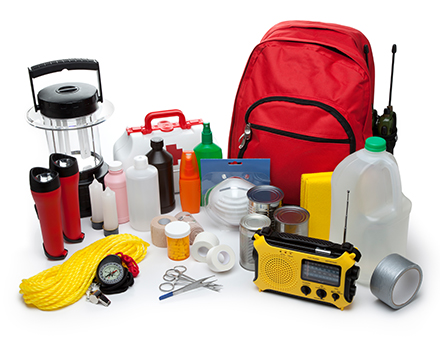Preparing for the Worst: How to Build an Emergency Kit for Your Home
Disasters can happen anytime and anywhere. It is essential to be prepared for the worst, and building an emergency kit is one of the best ways to ensure your safety and survival during emergencies. In this section, we will guide you through the process of building an emergency kit for your home.

Essential Items for Your Emergency Kit
Your emergency kit should contain the following essential items:
- Water: Store at least one gallon of water per person per day for drinking and sanitation. Keep a three-day supply of water for each person in your home.
- Food: Keep a three-day supply of non-perishable food items that require minimal preparation, such as canned goods, energy bars, and dried fruits.
- First Aid Kit: A well-stocked first aid kit should include bandages, antiseptic, gauze, adhesive tape, scissors, and pain relievers.
- Tools and Supplies: Keep a flashlight, extra batteries, a whistle, a multi-purpose tool, duct tape, plastic sheeting, and garbage bags in your emergency kit.
- Personal Hygiene Items: Include wet wipes, hand sanitizer, and toilet paper in your emergency kit.
- Medications and Medical Supplies: Keep a seven-day supply of essential medications, such as insulin and inhalers, and other medical supplies, such as hearing aids and glasses, in your emergency kit.
- Important Documents: Keep copies of important documents, such as identification papers, insurance policies, and emergency contact information, in your emergency kit.
- Cash and Coins: Keep some cash and coins in your emergency kit in case ATMs and credit card machines are not working.
Additional Items for Your Emergency Kit
In addition to the essential items, you may also consider adding the following items in your emergency kit:
- Extra Clothing and Blankets: Keep extra clothing and blankets in your emergency kit, in case you need to stay warm.
- Entertainment Items: Keep some books, board games, or cards in your emergency kit, to help pass the time.
- Special Needs Items: If you have pets, children, or elderly family members, make sure to include their special needs items, such as pet food, baby formula, and adult diapers.
Storing Your Emergency Kit
Your emergency kit should be stored in a cool, dry place, and easily accessible in case of emergency. You may consider storing it in a waterproof container or bag, to protect it from water damage.
Conclusion
Building an emergency kit is an essential step in preparing for emergencies. Your kit should contain essential items, such as water, food, and first aid supplies, as well as additional items, such as extra clothing and entertainment items. Store your emergency kit in a cool, dry place, and make sure it is easily accessible in case of emergency. By taking the time to build an emergency kit, you can ensure your safety and survival during disasters.







